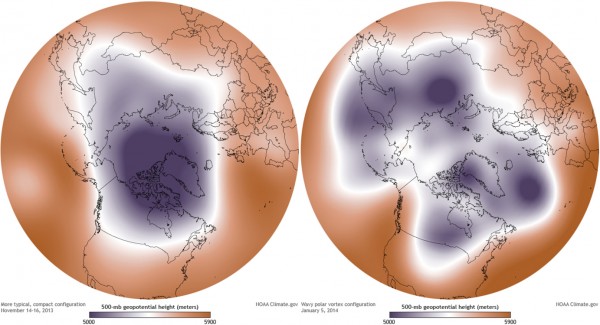Study links sea ice loss to cold air in middle latitudes
September 22, 2014

Yuri Bult-Ito
907-474-2462
9/22/2014
Shrinking sea ice in the Arctic Ocean may be the culprit behind recent severely cold temperatures in North America, Europe and Asia, a new study has reported.
The study, conducted by a team of international scientists that included University of Alaska Fairbanks researcher Xiangdong Zhang, shows how loss of sea ice in the Arctic in November and December, especially over the Barents and Kara seas off Russia, contributes to the cold in mid latitudes.
The polar vortex normally circulates over the arctic stratosphere and holds cold air within the Arctic during winter, when sea ice keeps the heat energy from escaping from the ocean into the atmosphere.
But shrinking sea ice due to warming in the Arctic allows heat energy to escape from the ocean's surface into the atmosphere. This causes airstream changes in the atmosphere, and weakens the polar vortex. As a result, the cold arctic air is pulled down to the middle latitudes, explained Zhang, a co-author and scientist at the UAF International Arctic Research Center.
The researchers used observation-based data analyses and climate model experiments. Both methods showed the same strong link between loss of arctic sea ice and the weakening of the polar vortex.
The study was published in the journal Nature Communications this month.

CONTACT: Xiandong Zhang, research professor at the International Arctic Research Center and Department of Atmospheric Sciences, 907-474-2675, xdz@iarc.uaf.edu.
ON THE WEB: The paper “Weakening of the stratospheric polar vortex by arctic sea-ice loss” by B-M Kim, S-W Son, S-K Min, J-H Jeong, S-J Kim, X. Zhang, T. Shim and J-H Yoon appears in Nature Communications (DOI: 10.1038/ncomms5646): http://www.nature.com/ncomms/2014/140902/ncomms5646/full/ncomms5646.html.
YB/9-23-14/058-15


